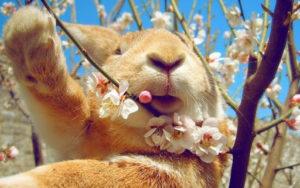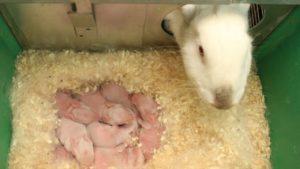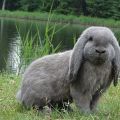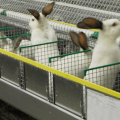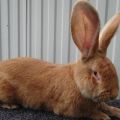Description of rabbits of the fold sheep breed and keeping at home
A distinctive feature of rabbits of the fold ram breed is hanging ears and miniature sizes. Decorative pets are trainable and toilet trained. Friendly and phlegmatic animals need daily walks, games and communication with the owner. Also, before buying, you should familiarize yourself with the rules of feeding and caring for the breed.
Content
The history of the breed
The decorative lop-eared ram rabbit originated from farm breeds in mid-twentieth century England. Long ears were considered a marriage. But the farmers decided to turn the flaw into a distinguishing feature. The idea was supported by French colleagues.
As a result of breeding work, varieties of fold rabbits appeared: French, American, German. In 1964, the first dwarf ram appeared in Holland as a result of crossing the French and Dutch fold breeds.
In 1974, the mini-ram breed appeared in California. Its variety is a fleecy short-haired ram with plush hair. The ancestor of the lop-eared decorative rabbit is a farm Flemish giant. But modern domestic breeds are better suited for keeping in an apartment.
Description and characteristics of a lop-eared ram
Rabbits appearance:
- height - 30 centimeters;
- body length - 70 centimeters;
- weight - 1.5-2 kilograms;
- the length of the ears is 25 centimeters from the age of three months;
- the head is rounded, with a prominent forehead and a well-defined occiput;
- wool with undercoat, soft, 18 mm long;
- varied color - white, gray, black, opal, blue.

Female lop-eared rams differ from males by the absence of dewlap and smaller size. Rabbits are born with straight ears or pointing in different directions. By the age of three months, the ears grow in length and sag on the sides of the convex forehead, giving the rabbit's head a resemblance to a ram's.
The docile nature and attachment of the rams to the owner is explained by poor hearing. Lop-eared rabbits are phlegmatic in character. The life expectancy of decorative breed pets in favorable conditions is 10 years.
Advantages and disadvantages
Positive qualities of rabbits-rams:
- quick wits;
- stress resistance;
- good digestion.
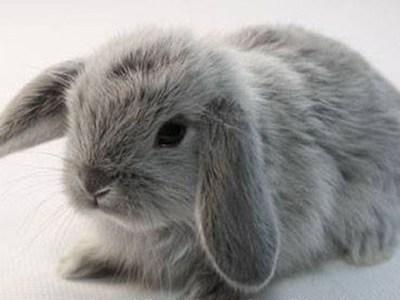
Due to their innate calmness, fold rams quickly adapt to a new home and tolerate transportation well.
The disadvantage of rams is a weak immunity. But health often fails unvaccinated rabbits and those living in inappropriate conditions. A disadvantage in breeding is a small offspring of a decorative breed - on average, 4 rabbits.
Breeders call the negative qualities of lop-eared rabbits garbage around the cage, teeth marks on wallpaper, furniture and wires, smell and noise at night. Sheep behave badly because they lack attention, and they have a lot of unspent energy. The rabbits, with whom they play and train every day, do not cause much trouble.
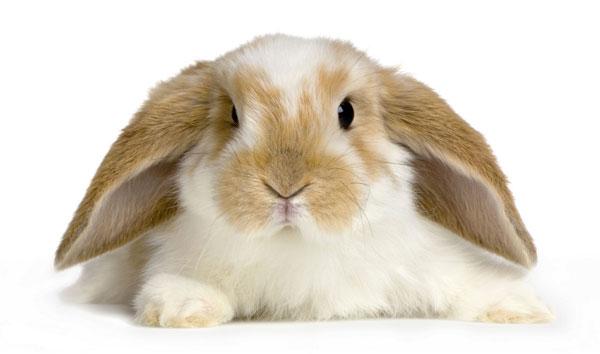
Content rules
How to provide favorable conditions and proper care for a lop-eared ram rabbit:
- choose a cage of a comfortable size - 80 centimeters in length and width and 50 centimeters in height;
- put a blanket of clean paper and sawdust on the bottom of the cage and change it every day;
- maintain a temperature of 22-25 degrees in the apartment;
- prevent a draft;
- there should always be food and water in the feeder and drinker;
- comb the coat during shedding;
- cut claws;
- clean your ears;
- keep the toilet clean.
Lop-eared rams molt in spring and autumn. Brushing prevents hard hairballs from forming in pets' stomach, which they ingest.
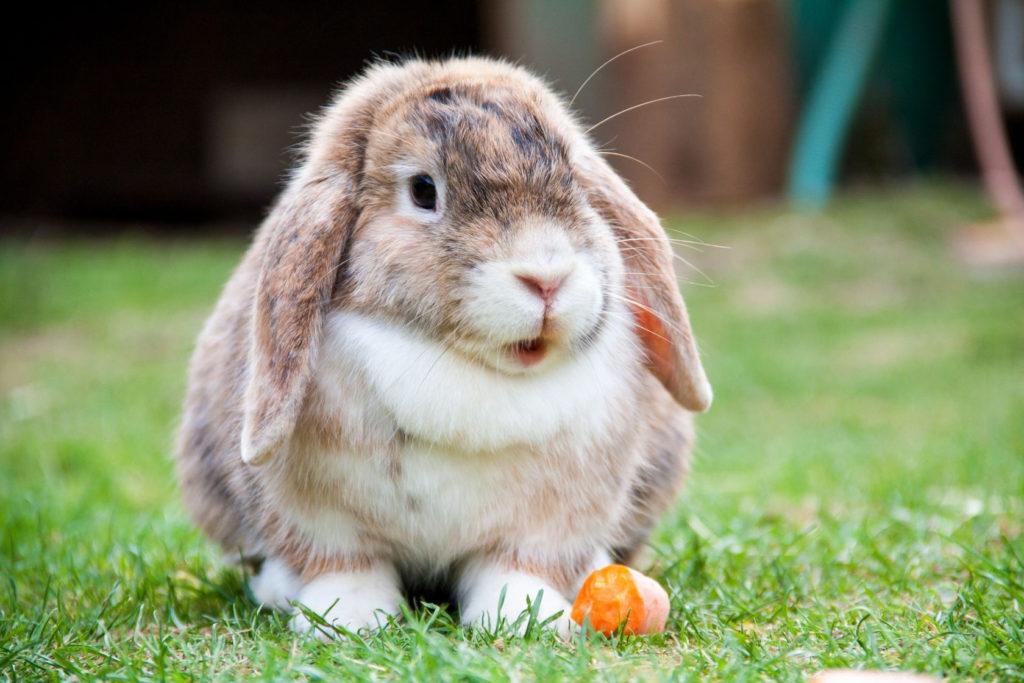
Rabbits are manicured every two to three weeks with a special nail clipper, the part located above the blood vessel is sheared. The ear canal is cleaned with cosmetic sticks. A lop-eared ram should be released from the cage for at least 1.5 hours a day and spend this time playing together. Walking around the apartment alone will not benefit either the animal or the belongings of the owners.
Features of taming
How to help a lop-eared ram-rabbit adapt at home:
- pour food and talk to him affectionately;
- do household chores near the cage so that the pet gets used to the presence of a person;
- open the door for the animal to come out, accompany it.
If the rabbit is calm, eats, sleeps, washes and shows interest in what is happening on the other side of the cage, you can proceed to hand training:
- pour food into the palm of your hand and extend to the rabbit, calling him by name;
- when he gets used to eating from his hand, stroke him with the other hand;
- put an empty palm in front of the rabbit and raise it a little when he climbs on it in search of food.
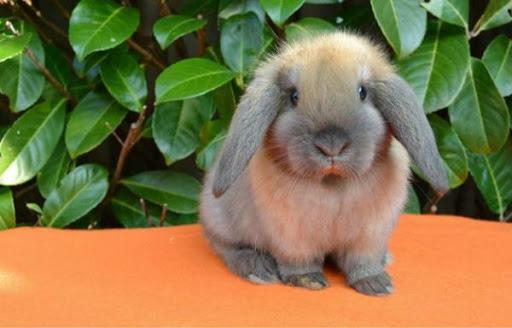
Simultaneously with taming, the ram-rabbit will learn to respond to its nickname.
Sterilization and castration
The puberty of lop-eared rams occurs at 6 months. The animals become restless, irritable, leave marks around the apartment. If raising rabbits is not part of the plans, the animal needs to be neutered or neutered. Suitable age for surgery is 4-6 months.
The older rabbits of the decorative breed often have complications. Sheep aged from one year and older must first be examined. In the absence of contraindications, the veterinarian may admit to the operation. But mature rabbits take longer to recover than younger ones.
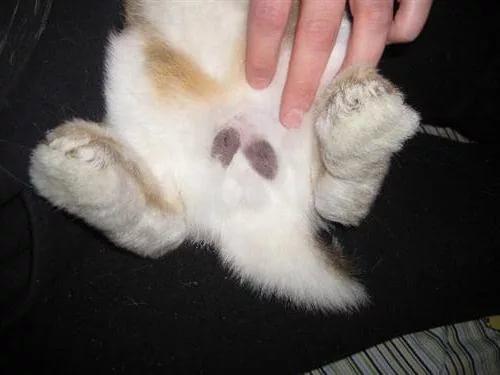
Lop-eared ram diet
Decorative breed rabbit menu:
- root vegetables - carrots, boiled potatoes, turnips, pumpkin, raw broccoli; as well as Jerusalem artichoke, beets, zucchini;
- cereals - peeled oats, wheat, sunflower seeds, flax, pumpkin;
- green fodder - in summer - fresh grass collected in an ecologically clean place, in winter - dried herbs.
Lop-eared rams will love dandelions, plantain, clover, fireweed, reed, sorrel. For normal digestion, Lop-eared rabbits need fiber, which is contained in beans, corn, young apple, cherry, apricot twigs.
A dangerous product for lop-eared sheep is white and red cabbage.The vegetable contains substances that stimulate the production of digestive enzymes. With regular use of cabbage, rabbits-rams suffer from intestinal distention, and in severe cases, digestion stops. Instead of white cabbage, you can give cauliflower. Its inflorescences contain fiber, vitamins A, B and C.
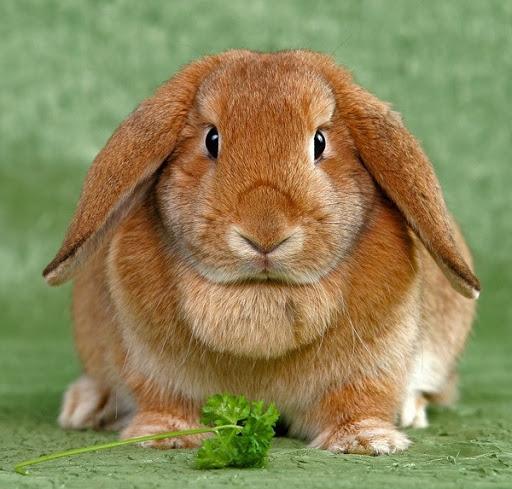
Rabbit mixes are made up of grains and seeds and are suitable as coarse food. The pelleted feed contains hay, vegetable chunks and mineral additives to improve the appearance of the coat. Hard granules grind teeth.
The prepared food is balanced and suitable for daily feeding. But lop-eared rabbits do not eat all the ingredients equally well, they choose the most attractive in smell and taste. As a result, the balance is upset. Therefore, it is better for sheep to buy a grain mixture and add self-prepared vegetables.
Breeding subtleties
Lop-eared rabbits are ready for breeding at 6 months. Basic breeding principles:
- to maintain the purity of the breed, only a purebred male is taken. The female can be either purebred or with flaws that are not considered gross deviations;
- as a rule, rabbits of the same color are knitted. Parents of different colors often have rabbits with a marriage in color;
- the female should receive sufficient water during pregnancy. Dehydration negatively affects lactation in rabbits.

Childbirth occurs one month after mating. The behavior of the female signals the imminent birth - a week before giving birth, the expectant mother pulls out the fur on her chest to build a nest. At this time, a queen cell for rabbits is placed in a cage - a box with straw, which the female will equip for their appearance.
Features of the development of lop-eared rabbits-rams:
- are born without hair, blind and with straight ears;
- on the tenth day they become covered with hair and open their eyes;
- on the fourteenth day, they are ready to feed with vegetables and grass, but their main food is mother's milk.
On the thirtieth day, the straight ears of the rams sag, and on the forty-fifth day, the rabbits can be transferred to adult nutrition. At three months, young lop-eared rabbits begin their "adolescence" period. The muzzles of animals are awkwardly stretched. By six months, the body imbalance is gone, and fold rabbits look attractive.

Diseases and vaccinations
On the twentieth day of life, lop-eared rabbits are chased away by helminths, and at the age of one month they are vaccinated against myxomatosis and viral hemorrhagic disease. Preparations for worms are given 10 days before vaccination.
For inoculation, a complex vaccine against myxomatosis and hemorrhagic disease is used or separate vaccines for each disease are administered at intervals. After 3 months, a revaccination is done, and then the vaccinations are repeated every six months.
Myxomatosis and viral hemorrhagic disease (VGBD) are incurable diseases transmitted from sick animals and blood-sucking insects.
Rhinitis, bronchitis, pneumonia, stomatitis are infectious diseases that are treated at the initial stage. In an acute course and in the absence of veterinary care, rabbits die after 10 days.
With improper nutrition, animals suffer from bloating and intestinal obstruction. The hardening of a ball of hair, which the rabbit swallows during the moulting period and without daily combing, also leads to a stop of the digestive system. The first symptom of all diseases is refusal to eat. If the pet does not eat anything for the second day and sits ruffled, it needs to be urgently examined by a veterinarian.

How to buy a good lop-eared rabbit
Signs of a purebred and healthy lop-eared rabbit:
- ears are completely lowered;
- correct bite - the lower teeth close behind the upper ones;
- shiny eyes, clean nose and coat.
Don't buy a 2 month old bunny with straight ears. He is not purebred, and the ears will remain on the crown.
Apathy and drowsiness are shown by babies who are too early to sell. Without breast milk and warmth, they will grow shy and aggressive. An incorrect bite, in which the lower teeth close in front of the front teeth, leads to dental diseases in the future. Wet, sticky hair around the eyes, nose, under the tail are signs of an unhealthy animal.
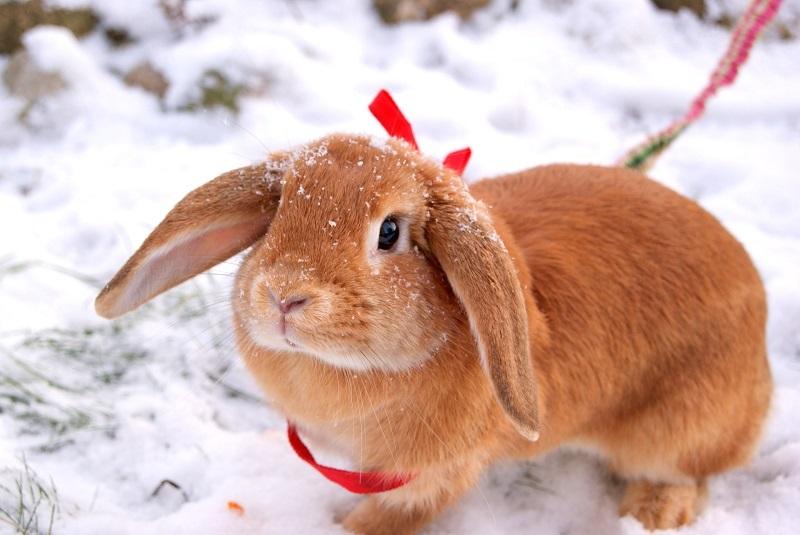
approximate cost
The price of a fold breed depends on the class:
- show - perfect in exterior, the most expensive rabbits;
- breed - individuals with acceptable flaws, suitable for mating, in second place in value;
- pet - lop-eared rams with marriage are not suitable for breeding, so the price for them is lower.
More expensive than show-class rabbits are animals with a rare color: cheetah, Siamese, red, Rena. They are highly rated despite not meeting breed standards. The average price for lop-eared sheep rabbits ranges from five to eight thousand rubles.
